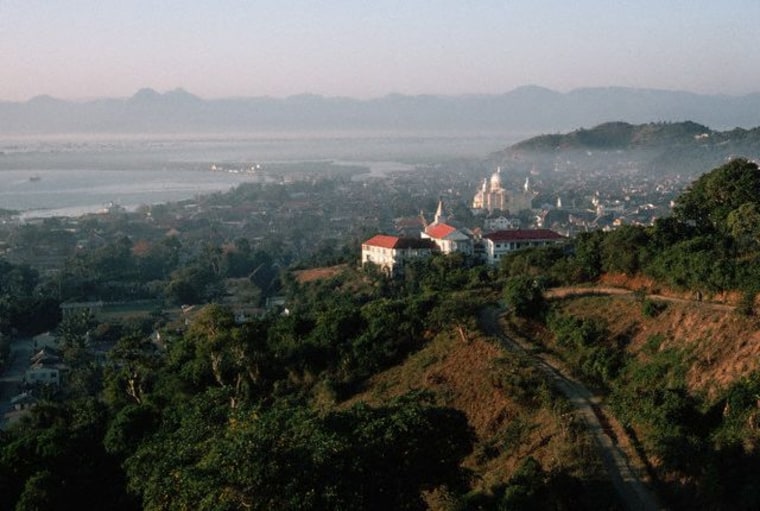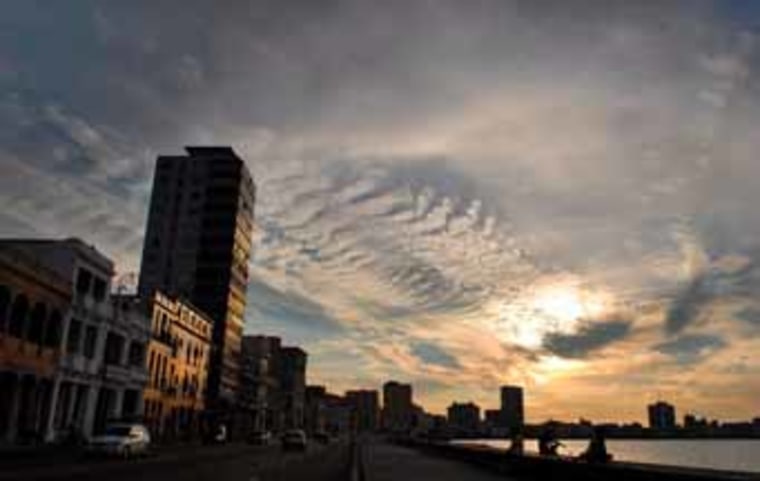Let's say you're planning a Caribbean vacation. You're not sure which island you want to see, so you visit a well-known travel Web site and browse their map. There's Jamaica, Puerto Rico, Turks & Caicos, the Bahamas, the Dominican Republic and ...
Wait a second — doesn't another country share the island of Hispaniola with the Dominican Republic? What happened to Haiti?
You know a country is off the beaten path when a major travel company doesn't even show it on their maps. In a nutshell, that's Haiti — a country with a reputation so ravaged by decades of civil war, catastrophic weather calamities and crippling corruption that you might forget it's even in the Caribbean.
It wasn't always like this. Even during the time of notoriously corrupt François “Papa Doc” Duvalier in the 1960s, Haiti was a popular tourist destination. And that's to say nothing of one of the Americas' most famous travelers, Christopher Columbus, who landed here in 1492. But when the military took power in a coup in 1991, the political situation rapidly deteriorated and the international community condemned the new regime for human rights abuses. Ever since, "Haiti" has been synonymous with poverty and violence.
To be sure, Haiti is still a desperately poor nation, but adventurous travelers are coming to appreciate this beleaguered nation for its West African-influenced heritage, truly untouched beaches and vibrant urban culture. And getting there is simple: Daily direct flights to Port-Au-Prince are available from most major American cities, and they're actually quite affordable.
Haiti is just one example of a country struggling to overcome a reputation for danger. Telling friends or family that you are traveling to Bangladesh, Bosnia or any country ending in “-stan” is likely to result in expressions of concern for your safety. But, as with Haiti, many of these concerns are based on dusty mental files and stereotypes that are easier to employ than explode.
More often than not, it's political unrest that tarnishes a country's image. And that's not always fair, says Julia Dimon, a travel journalist and co-host of “Word Travels,” a documentary series about the real lives of travel writers airing internationally on the National Geographic Adventure channel. “Political strife found in certain areas of a country shouldn't taint the entire destination,” says Dimon. “Despite negative news and nasty travel advisories, I've discovered that life goes on as normal — people shop, play, drink, pray and try to take care of their families.”
Take Pakistan. Founded when the British Empire partitioned the subcontinent in 1947 (forming India, Pakistan and East Pakistan, which would become Bangladesh in 1976), this Islamic nation is technically one of the world's youngest countries. But its history and heritage go back thousands of years. Lahore, for instance, near the border with India in the east, was home to the Mughal empire, whose Shah Jahan built the Taj Mahal in the memory of his “favorite” wife, Mumtaz Mahal. The Mughals' influence can still be seen at the Badshahi Mosque, built by emperor Aurangzeb Alamgir; the Lahore Fort, which may date back nearly 1,000 years; and the Shalimar Gardens, also built by Shah Jahan.
There's no denying that parts of Pakistan still see their share of conflict, but it's easy to avoid the truly dangerous areas — the tumultuous tribal regions and the long western border with Afghanistan. Lahore, in fact, is easily reached overland from New Delhi.
Ever since it played a central role in the Vietnam War, the Lao People's Democratic Republic — aka Laos— has been synonymous with carpet-bombing and jungle warfare. These days, a trail carved out by adventurous backpackers in the '70s has given way to safe, quick byways that can take travelers from the bustling capital, Vientiane, down to quiet islands or up to rugged mountains. In the country's center, Vang Vieng is a scruffy river town that's a required stop for backpackers coming up from Cambodia or down from the north via Thailand. But the current hotspot is Luang Prabang, a bustling yet intimate town where top-notch hotels are opening to accommodate travelers who come for quiet strolls along the Mekong, tranquil visits to the Buddhist temples and an increasingly cosmopolitan dining scene.
In some must-see countries, the conflicts still simmer. For more than 30 years, the Liberation Tigers of Tamil Eelam waged war against the government of Sri Lanka, seeking an autonomous ethnic state. The clash officially ended in 2009, and though tensions are still high in certain regions, tourists are returning to the island-nation off India's southern coast. In fact, it's already one of Dimon's favorite destinations.

"The reward of visiting Sri Lanka is much greater than the risk,” she says, “although I do understand why people might shy away from the country. Travel advisories read like the diary of a CIA operative — ‘fatal bombings,’ ‘incidents of violence targeting crowds of civilians’ and ‘random acts of terrorism’ aren’t the most reassuring reports to hear just before you get on a plane.” But for Dimon, reading too many advisories can lead to unnecessary paranoia. “While it's good to be aware of the potential risks in a country, the on-the-ground-reality is rarely as scary.”
It should be noted that some once-dangerous countries are still quite dangerous, particularly if you cross their borders illegally. American journalists Laura Ling and Euna Lee learned that the hard way when authorities arrested them for crossing into North Koreafrom China. For their indiscretion, they were sentenced to 12 years in a labor camp. (They were freed after six months thanks to vigorous diplomatic efforts.) For travelers who are prepared to act judiciously, the rewards of visiting North Korea outweigh the risks. Through the North Korean consulate in Beijing, U.S. citizens can secure a visa and join an organized tour of the capital, Pyongyang, and certain surrounding areas. Don't expect a real taste of North Korean culture. The trips are carefully orchestrated and visitors are never out of their handlers' sights.

Dangerous, of course, is a relative term, and veering off the well-trampled path isn't for everyone. The U.S. State Department regularly posts travel advisories for Americans on its Web site; several of the aforementioned countries are flagged with warnings.
But as Dimon puts it, “Bad things can happen anywhere around the world — subway bombings in Madrid, natural disasters in Thailand, terrorist attacks in New York. These aren't considered particularly dangerous destinations. Tragic things can happen any where in the world, even at home, so I don't believe that it's a legitimate reason not to travel.”
